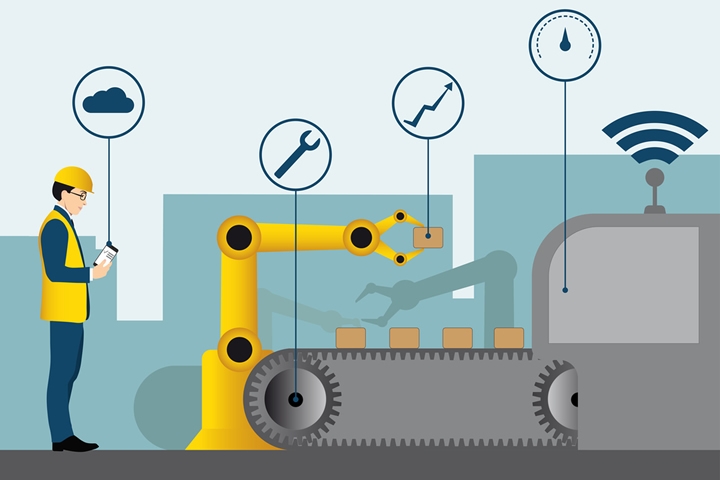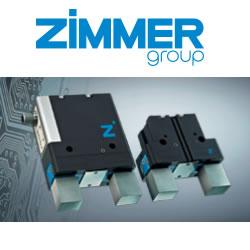Traditional wireless technologies like Wi-Fi, while great in consumer environments, often fall short of meeting the stringent requirements of industrial settings and specific factory automation applications and machine deployments.
 What Is the Difference between Wi-Fi and Industrial Wireless Networks?
What Is the Difference between Wi-Fi and Industrial Wireless Networks?

Gabi Daniely, Chief Strategy & Marketing Officer | CoreTigo
The performance requirements of communication networks define their suitability for a broad range of applications across many industries. Traditional wireless technologies like Wi-Fi, while great in consumer environments, often fall short of meeting the stringent requirements of industrial settings and specific factory automation applications and machine deployments.
Industrial wireless networks, such as IO-Link Wireless, address these challenges. They were designed specifically for factory automation for both wireless control and monitoring in extreme conditions. But what exactly sets these technologies apart?
Key Takeaways:
- While Wi-Fi works well for monitoring, it lacks the reliability and low latency required for mission-critical industrial applications.
- IO-Link Wireless technology offers “cable-grade” ultra-high reliability, along with low latency, making it adequate for high-speed/motion control applications.
- Interference, network congestion, and IT limitations make Wi-Fi less reliable and harder to scale in dynamic industrial setups.
- IO-Link Wireless is a global industrial standard that offers seamless integration with industrial sensors, actuators, and devices.
Introduction to IO-Link Wireless
IO-Link Wireless is a global wireless communication standard designed for factory automation. It is built on the established IO-Link IEC 61131-9 standard. This standard replaces traditional cables for remote sensor and actuator control and offers unparalleled reliability and low latency.
Unlike Wi-Fi, which prioritizes high data throughput, IO-Link Wireless works well for mission-critical applications in industrial environments. This makes it an ideal choice for deterministic communication with high reliability and scalability.
Key Differences Between Wi-Fi and Industrial Wireless Networks
The main differences between Wi-Fi and industrial wireless networks are:
Data Volume
Wi-Fi is optimized for high data throughput. That’s why it is suitable for streaming videos, downloading large files, and browsing the internet. It’s designed to handle substantial data packages, such as high-resolution images or real-time video streams.
Meanwhile, industrial wireless networks are optimized for transmitting small, frequent data packets. For example, a wireless pressure sensor in an industrial process may only need to send minimal information, such as a tag name and process variable, to a controller every few seconds. Similarly, a gripper or vacuum pump on a robotic arm or rotary table can be wirelessly controlled using minimal command data — just enough to manage actions like activation, opening and closing, rotation, or grip force. This efficiency minimizes bandwidth usage and ensures consistent communication across large-scale industrial operations.
Reliability
Wi-Fi networks are subject to periodic interruptions. While a brief connectivity loss during a video call might be annoying, it’s generally acceptable in non-critical consumer applications.
In an industrial environment, communication interruptions can lead to system failures or safety hazards. IO-Link Wireless ensures reliability with a Packet Error Rate (PER) of 1e-9, significantly outperforming Wi-Fi and other protocols. As an example, Wi-Fi has a PER of 1e-3, which makes IO-Link Wireless literally one million times more reliable than Wi-Fi.
To ensure high reliability, IO-Link Wireless utilizes mechanisms like blocklisting and frequency hopping. These features also enable it to coexist seamlessly with other wireless networks that may be operating within the facility.
Low Latency
IO-Link Wireless offers an impressive low latency of just 5 milliseconds, making it ideal for control applications that demand rapid response times, even with high-speed or fast-rotating equipment. This low latency, combined with the exceptional reliability mentioned earlier, makes it the only protocol suitable for certain applications. It enables machine and solution designs that were previously impossible with traditional wireless networks like Wi-Fi. One such example is the control of grippers or vacuum pumps onboard high-speed movers in linear track smart conveying systems.
Deterministic
IO-Link Wireless is designed as a deterministic protocol where there is a guarantee that each data packet will be delivered within a bounded delay. The structure of the IO-Link Wireless cycle is strictly defined, there is a limitation on the maximum number of permitted amount of Wireless Devices per IO-Link Wireless Master, and the Critical Data is transmitted periodically in a deterministic manner. All these, among other deterministic attributes of IO-Link Wireless, ensure predictable properties of the network and enable algorithms that cannot be similarly applied with non-deterministic protocols such as Wi-Fi.
Robust
IO-Link Wireless uses the Gaussian Frequency Shift Keying (GFSK) modulation. GFSK is a very robust modulation for dealing with interferers as it confines emissions to a relatively narrow spectral band, thus making it more immune to noise. Wi-Fi does not use the GFSK modulation, thus making it less immune to noise and interferences which are very common in industrial settings.
IO-Link Wireless also supports non-line-of-sight communication, which is crucial for industrial wireless systems. This is especially important because many sensors and actuators installed on machines and production lines do not have a clear line of sight for communication.
Seamless and Simple OT Integration
IO-Link Wireless products are designed for smooth integration at the OT level, directly on machines and production lines. They facilitate both fieldbus and industrial Ethernet communication, while eliminating the need for IT involvement to access Wi-Fi network resources. This makes IO-Link Wireless significantly easier to deploy compared to Wi-Fi, particularly in retrofitting applications, and allows for quicker, seamless integration with industrial sensors, actuators, and PLCs.
Advantages of IO-Link Wireless in Industrial Settings
When it comes to an industrial setting, IO-Link Wireless industrial wireless automation solutions have several important advantages:
- High Reliability: With a PER of 1e-9, IO-Link Wireless ensures nearly error-free communication, matching the reliability of wired systems.
- Low Latency: Deterministic latency of up to 5ms allows real-time control, essential for mission-critical and control applications.
- Scalability: Supports dozens of devices per machine/workcell, even on high-speed rotating or moving equipment, thus enabling flexible system design.
- Robustness: Coexists with other 2.4GHz protocols and is immune to interferences, through advanced interference mitigation techniques.
- Simple: Allows seamless OT and IT integration
- Unique: Enables several applications for factory automation that were not possible before
Although Wi-Fi offers benefits in a wide range of real-world applications, it was not specifically designed as an industrial standard. It does not fulfill the stringent requirements that IO-Link Wireless was engineered to address.
Limitations of Wi-Fi in Industrial Settings
One significant drawback is Wi-Fi’s limited ability to integrate with industrial sensors and actuators, which often require specialized industrial communication protocols. Wi-Fi networks also suffer from susceptibility to interference and network congestion, especially in facilities with numerous wireless devices. This congestion can lead to dropped packets and inconsistent data rates.
The IT infrastructure required for Wi-Fi-based monitoring systems often imposes constraints, such as limited reliability, coverage, and dependency on centralized IT management. These limitations can complicate deployment and maintenance in dynamic industrial setups.
At the same time, IO-Link Wireless provides a purpose-built solution that ensures robust communication in the presence of interference while integrating seamlessly with existing industrial protocols and devices for the most demanding industrial applications.
Choosing an Industrial Wireless Network over Wi-Fi
While Wi-Fi serves as a versatile wireless solution for high-bandwidth applications, its limitations in reliability, latency, and robustness make it less suitable for industrial environments. IO-Link Wireless, with its deterministic communication, cable-grade reliability, and low latency, stands out as a purpose-built solution for factory and industrial wireless automation.
As industries continue to adopt advanced automation technologies, it’s important for business leaders to understand the strengths and limitations of different wireless networks. IO-Link Wireless combines the flexibility of wireless communication with the reliability demanded by modern industrial processes.
The content & opinions in this article are the author’s and do not necessarily represent the views of RoboticsTomorrow
Featured Product

